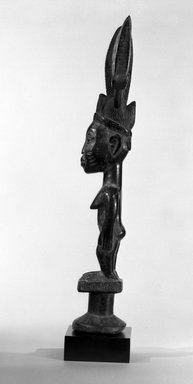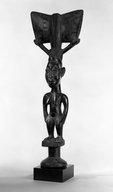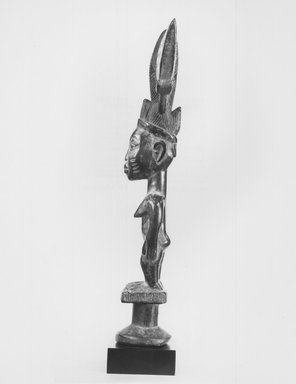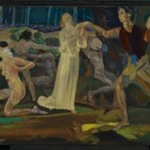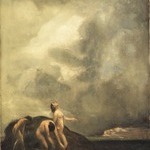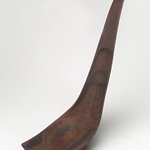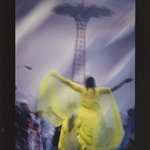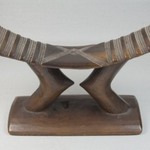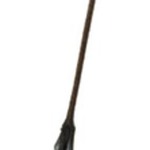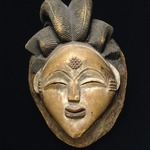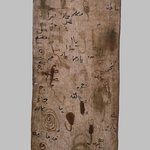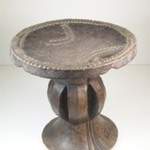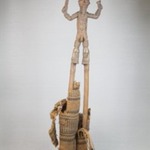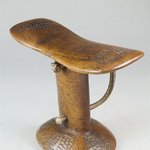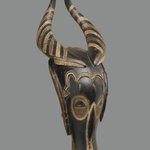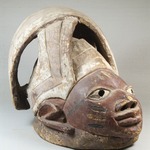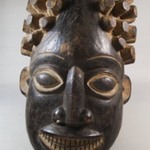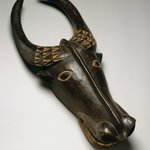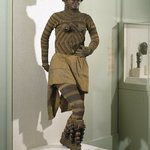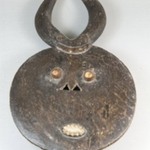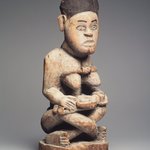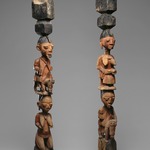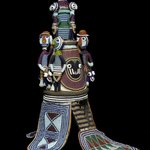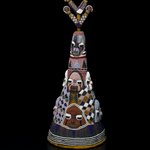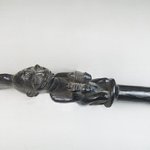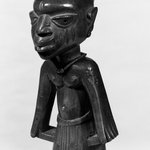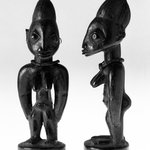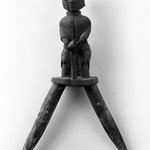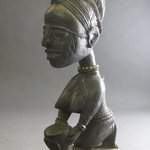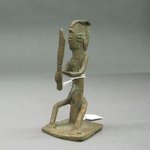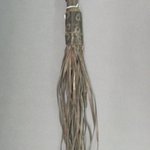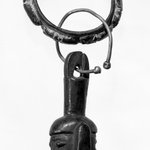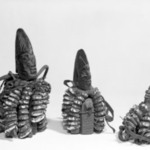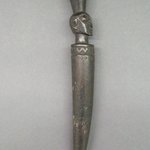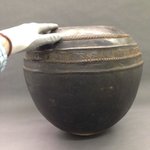Dance Wand (Oshe Shango)
Arts of Africa
An oshe shango, or dance wand, is carried by devotees at the annual festival for Shango, the god of thunder and lightning. The double ax-blade motif on the figure's head represents a thunderbolt, associated with the sudden, overwhelming, and unpredictable power of of Shango. The female figure balancing the thunderbolts on her head represents a devotee of the god.
MEDIUM
Wood, pigment
DATES
late 19th or early 20th century
DIMENSIONS
19 1/2 x 7 x 3 1/4 in. (49.5 x 17.8 x 8.3 cm)
(show scale)
ACCESSION NUMBER
79.27
CREDIT LINE
Frank L. Babbott Fund and Designated Purchase Fund
CATALOGUE DESCRIPTION
A dance wand in the form of a standing wooden female figure with arms at sides apart from torso; hands joined at hips; and feet and legs apart. Facial features include a forehead with three vertical cicatrization marks; eyelids heavy and triangular in shape; centers of eyes pierced; and lips slightly apart. Ears are horseshoe-shaped and slightly flared away from head. Coiffure has four overlapping cone-shaped elements with incised striations. Face and coiffure are separated by a smooth band with ties at the back of the head. A large double-edged axe springs vertically from top of coiffure. It is supported on either side by a smaller axe attached to a handle that joins the coiffure. Three leaf-shaped cicatrization marks appear on the front of each axe blade. Central rib of main staff (oshe) has incised geometric designs of diagonal lines and a horizontal-notched pattern on the front and back. Figure is a deep burnished reddish color with traces of red camwood. Coiffure and axe are matte black. Figure stands on its own rectangular base. Below the base is a handle in the shape of a cylinder with a flared circular terminal. Object is mounted on a modern wooden black stand. Condition is excellent. Evidence of wear on handle. Figure has some pitting and surface losses.
MUSEUM LOCATION
This item is not on view
CAPTION
Yorùbá (Igbomina subgroup). Dance Wand (Oshe Shango), late 19th or early 20th century. Wood, pigment, 19 1/2 x 7 x 3 1/4 in. (49.5 x 17.8 x 8.3 cm). Brooklyn Museum, Frank L. Babbott Fund and Designated Purchase Fund, 79.27. Creative Commons-BY (Photo: Brooklyn Museum, 79.27_bw.jpg)
IMAGE
overall, 79.27_bw.jpg. Brooklyn Museum photograph
"CUR" at the beginning of an image file name means that the image was created by a curatorial staff member. These study images may be digital point-and-shoot photographs, when we don\'t yet have high-quality studio photography, or they may be scans of older negatives, slides, or photographic prints, providing historical documentation of the object.
RIGHTS STATEMENT
Creative Commons-BY
You may download and use Brooklyn Museum images of this three-dimensional work in accordance with a
Creative Commons license. Fair use, as understood under the United States Copyright Act, may also apply.
Please include caption information from this page and credit the Brooklyn Museum. If you need a high resolution file, please fill out our online
application form (charges apply).
For further information about copyright, we recommend resources at the
United States Library of Congress,
Cornell University,
Copyright and Cultural Institutions: Guidelines for U.S. Libraries, Archives, and Museums, and
Copyright Watch.
For more information about the Museum's rights project, including how rights types are assigned, please see our
blog posts on copyright.
If you have any information regarding this work and rights to it, please contact
copyright@brooklynmuseum.org.
RECORD COMPLETENESS
Not every record you will find here is complete. More information is available for some works than for others, and some entries have been updated more recently. Records are frequently reviewed and revised, and
we welcome any additional information you might have.



